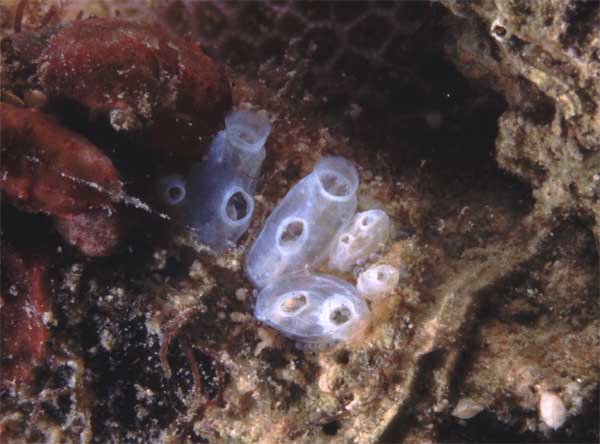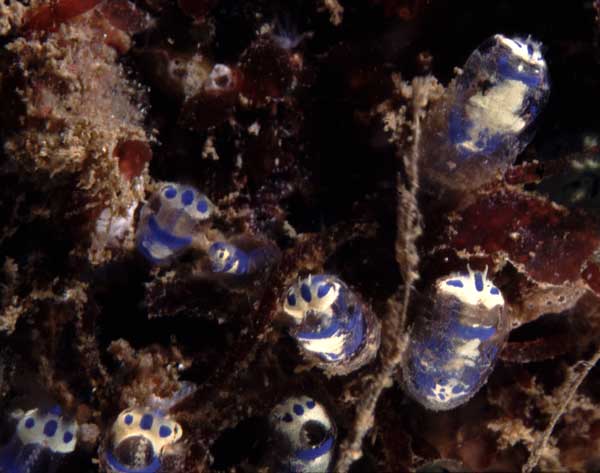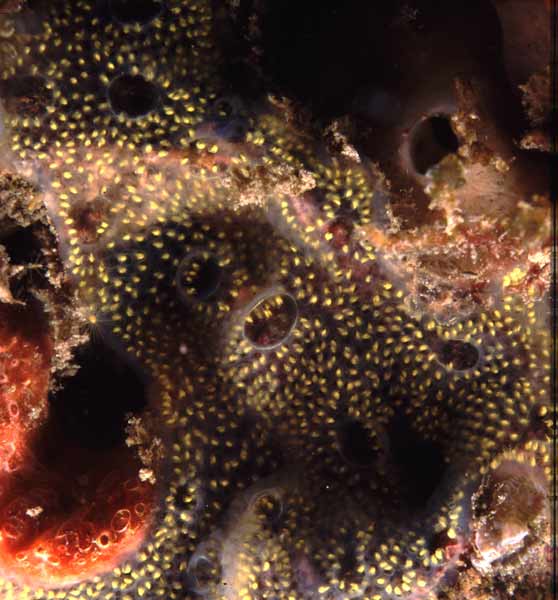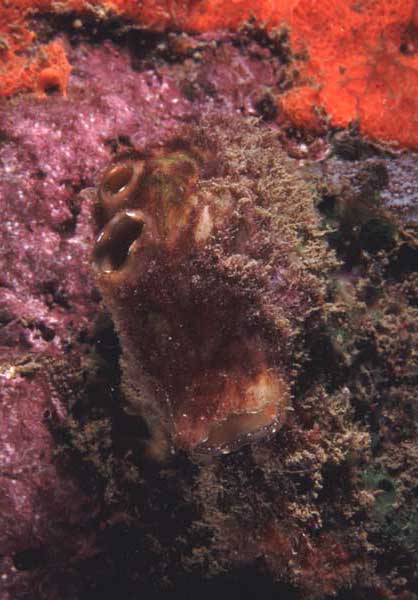| 
This website shows photographs of ascidian species from all over the world. The goal of each species page is to show several photographs of that species, preferably at different localities, to get an idea of the intra-specific variation present (for example see Ciona intestinalis). Underneath each photograph, the photographer is mentioned, sometimes with a link to his/her website, and a literature list (+ localities mentioned) is included, indicating some of the articles/books used to identify the pictures shown. To improve this website, I am always very interested in receiving additional photographs of Ascidian morphs and species, and in people who want to check the identifications. The best way to identify an ascidian is to study its anatomy (including spicules) in combination with photographs in situ. For anatomical dissections see the Bocas del Toro, Panama website. Because most of the identifications on this website were made on the basis of photographs only, some of the Latin names might not be accurate.
Localities:
Antilles, Guadeloupe; Azores;
Banyuls sur Mer, France;
Britain and Ireland; Britain,
Plymouth; Britain, Wales; Canada; Prince Edward Island, Canada; Lazarote/Canary Islands; Greece, Crete; Italy,
Sicily; Madeira; Mediterranean,
Adriatic Sea; Netherlands,
Brouwersdam; Netherlands, Grevelingen; Maldives, Ari Atoll; Netherlands,
Oosterschelde; Norway; Palau; Philippines; Portugal; Indonesia, Bali; Indonesia,
Flores; Indonesia, Java; Indonesia, N Sulawesi; Indonesia,
SW Sulawesi; Panama, Bocas
del Toro ; USA,
California; USA, Florida; USA, West coast of North America; USA, North east coast of America
Mussels overgrown by ascidians...
    
Links:
* The BC Tunicate key (by Heidi Gartner): The Royal BC Museum has developed a great key for the tunicate species of British Columbia. Also for identifying tunicates outside of BC, the key is extremely valuable as it illustrates the most important morphological characters for identifying tunicates.
* Ascidian
Home Page for United States (by Charles and Gretchen Lambert)
* Proceedings of the first international sea squirt conference in JEMBE 342(1)
 The Tunicate Web Portal
is an access point to the websites and databases dealing with tunicates. The Tunicate Web Portal
is an access point to the websites and databases dealing with tunicates.
* Colonial
Tunicates and Tunic webpage from Japan (by Euichi Hirose)
* Ulster Museum
Website: with ascidian species from Britain / Ireland (by Bernard
Picton).
* The http://www.guiamarina.com/ascidiacea/ website with ascidian species from the Adriatic, Chile, Peru, Scandinavia,
Spain, Antarctic and deep water (by Karen Sanamyan, Dirk Schories and
Hartwig Krumbeck)
* The Stachowicz Lab
Website with photographs of Ascidian species from the US west coast.
* Urochordate
Phylogeny Webpage (by Billy Swalla)
* The website of "the BioMarCell Observatoire de Villefranche sur
mer" about the
Fertilization and Development of Ascidians , in particular Phallusia and Ciona. (by Christian
Sardet)
* Website with ascidian species from north Sulawesi, Indonesia
* Didemnum
sp. webpage
of the USGS
* Tunicata email
discussion forum
* The former Dutch
Ascidians Homepage is still available.
* The Marine Biologicial Association
of the UK
* The Marine Life Information Network
(MarLIN)
* My PhD-project "Gastropod
Parasites and their Coral Hosts"
All photographs on this site, without a photographer mentioned underneath,
were taken by Arjan Gittenberger.
Do you have any suggestions?
Are you interested in using a photograph on this site for a presentation
or article?
(further information like geographical coordinates,
depth, habitat, date, etc. is available on request for almost each photograph)
Are you interested in ascidian specimens from the Netherlands for your
research?
... Please send an email to ascidians@hetnet.nl. |
|
| Recent
Updates:
6 May 2011: A links is added to a great key for identifying tunicates: The BC Tunicate Key (by Heidi Gartner)
2 October 2007: 71 photos of the ascidians off the U.S. north east coast.
30 September 2007: Photos of Ciona intestinalis and Styela clava from Prince Edward Island, Canada.
26 August 2006: ~150 photos and illustrations of ascidian species from
Bocas del Toro, Panama.
4 January 2006: 3 ascidian species from the Thousand
Islands, Java, Indonesia were added., i.e. Aplidium
multiplicata , Archidistoma
richeri and Polycarpa
papillata.
2 November 2005: 105 photographs of c. 45 ascidian species/morphs from
the Thousand Islands, Java,
Indonesia were added. |






 The
The 







